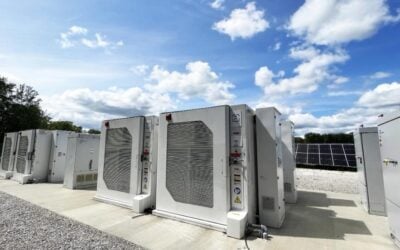
Nova Scotia is putting expansion of electricity storage capacity as a key pillar of its transition away from coal-fired electricity generation.
The Altantic Canadian province has just published a progress report on its Environmental Goals and Climate Change Reduction Act. The policy was passed by legislators in late 2021 and sets out a series of goals to reduce greenhouse gas (GHG) emissions and adapt to climate change.
Enjoy 12 months of exclusive analysis
- Regular insight and analysis of the industry’s biggest developments
- In-depth interviews with the industry’s leading figures
- Annual digital subscription to the PV Tech Power journal
- Discounts on Solar Media’s portfolio of events, in-person and virtual
Or continue reading this article for free
Nova Scotia is among the most coal-dependent of Canada’s provinces, and according to the national regulator burned coal for 51% of total generation in 2019. The Act calls for an end to coal generation by 2030.
It also wants to get to 80% renewable electricity by that time, and the provincial government said those two goals “have the greatest impact on our greenhouse gas emissions,” in its progress report.
Actions it is taking to enable them include building out more local renewable energy facilities and allowing better connection with renewables in neighbouring provinces in Atlantic Canada and Quebec.
The government also said that additional support for energy storage, as well as expanding energy efficiency programmes, will result in further emissions reductions while improving stability of the electricity system and suppressing increases in electricity costs.
The “additional support” referred to includes the passing earlier this year of Bill 264. The legislation is an amendment to Nova Scotia’s Electricity Act framework enabling the provincial Department of Natural Resources and Renewables to either run competitive procurements and issue contracts to grid-scale battery storage, or contract directly with projects and developers without the solicitation process.
“There’s no energy market, or ancillary services market in the province to speak of,” Patrick Bateman, an independent consultant retained by trade group Energy Storage Canada to work on Atlantic Canada industry issues told Energy-Storage.news earlier this year.
“So without those direct bilateral contracts, there’s no path to market.”
While contracts with the province would be a game changer, Bateman said, the key questions now are how the new structures will be implemented, how quickly, and what Nova Scotia’s ambitions are.
Nova Scotia’s main electricity supplier is Nova Scotia Power, an investor-owned utility (IOU), which announced this Spring that it had closed a request for proposal (RFP) for 150MW of battery storage, while a number of other developers have large projects in the province, Bateman said.
“One key development will be, now that this bill is in place, that sends a strong signal to those companies that there’s contracts at the end of the rainbow, so they can keep on developing and moving it [their project] forward.”
‘Energy storage clearly a leading option’
Natural resources and renewables minister Tory Rushton gave a speech as the Electricity Act amendment passed that mentioned twice in its opening paragraph a desire at government level to fast-track energy storage projects.
Regular readers of this site as well as subscribers to our quarterly journal PV Tech Power, will be aware of growing energy storage activity across Canada, although as Bateman pointed out, around 90% of a 5GW pipeline of projects expected to come online by 2030 is focused in two provinces, Ontario and Alberta.
However, as one of the provinces facing the biggest challenge to get off coal, Nova Scotia represents an interesting opportunity for energy storage to showcase its central role in the energy transition. Although Nova Scotia Power’s most recent integrated resource plan (IRP) modelled a need for around just 200MW of storage by the end of this decade, that could well change through subsequent revisions, Patrick Bateman said.
“In Nova Scotia, this province does not have good access to gas supply, they’re at the end of the pipeline. So when they’ll need it during the winter peak, that’s when it’s going to be least available and most expensive,” Bateman said.
“So how this province phases out coal, if it can go straight from coal to clean, and not from coal to gas to clean, that’ll be obviously the best future-proofed approach. Energy storage is clearly a leading option not only for the capacity that they need, but also the ancillary services as well.”






